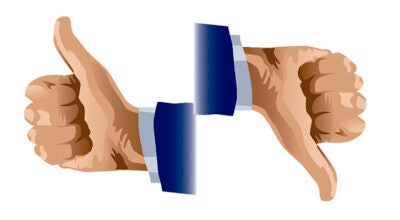Julie Clinefelter: Working together to make equitable internet accessible
Published 5:24 pm Tuesday, May 14, 2024
|
Getting your Trinity Audio player ready...
|
The Austin Public Library’s hotspot program began in 2015 as an initiative of Vision 2020. Intended as a temporary response to bridge the digital divide, the gap between people who can access and use digital technology and those who cannot, the program offered free wireless internet hotspot devices to library patrons. The three week check out period would give them breathing room to find a more permanent solution to home internet access.
On a simple level, the digital divide can be likened to a three-legged stool. One leg is the broadband issue. Broadband is the infrastructure needed to connect the internet to a geographical location or area. The second leg is access to the devices — computers, smart phones, routers and hotspots — that access the internet. The third leg is digital literacy, the knowledge and confidence to use the devices and the information accessed. Digital literacy goes beyond turning on the computer. It includes knowing what information is safe to share online, how to spot disinformation on the internet, and how digital skills can be used to improve one’s life.
When COVID hit in 2020, a spotlight was turned on the digital divide, and people across the country pitched in with ideas to bridge the gap. Locally, community groups got together to collaborate on initiatives to work on all three legs of the digital divide. Broadband access, access to devices and improving digital literacy.
However, as the urgency of COVID has receded, schools are pressed financially, staff shortages abound and nonprofits find grant money parameters shift to other initiatives. The federal Affordable Connectivity Program, which provided discounted monthly internet to 23 million eligible households nationwide, will end in May unless Congress provides additional funding. Yet, the digital divide remains.
Why is home internet an equity issue? Most of us take for granted what we can do from the comfort of our homes. The list is extensive: file taxes, manage bank accounts, download important documents, research local services, apply for jobs, submit homework assignments and take classes, keep in touch with family and friends who live far away, and watch our favorite sports teams. And the list goes on.
While libraries have long played a crucial role in bridging the digital divide, they face challenges fulfilling this mission. Beginning May 31, Austin Public Library’s hotspots will be the only devices available at no cost to the public.
Other existing programs in our community will end, and the library’s hotspot waiting list will grow. Libraries are invaluable community assets that provide many essential services, including internet access, to millions of people worldwide. However, they can be most effective as part of a broader ecosystem of solutions to address broadband access disparities in communities.
There are a number of questions Austin — as a community — needs to ask and answer in order to create sustainable, real-world solutions to the very real problems created by the digital divide. How can our community address these disparities? What conversations should we be having as a community? Who should be at the table and what collective solutions can we find? By pooling our resources as a community and working together, we can innovate to ensure everyone has equitable access to the digital resources they need to thrive in the 21st century.




